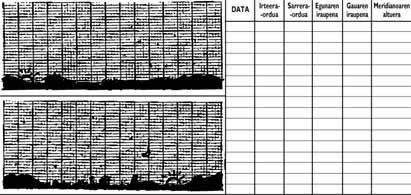How to teach astronomy?
Astronomy for children (8 /12 years)
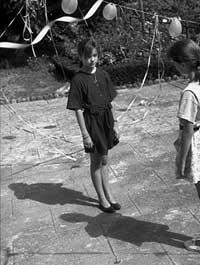
To bring children from 8 to 12 years of age closer to astronomy it is necessary to deepen their perception of that age. For this we propose the following game:
Knowing the shadows and light
Although children of this age distinguish the shadows of light, the degree of perception is too low to understand the dimension of these two phenomena. For example, understand both moon strips and color: the moon is bright because it is white. Likewise, they do not connect the shadow of the child with sunlight and do not understand the rest of phenomena that produce shade.
Playing with shapes and measurements
In this step one can deepen the child's perception of the Earth and the Universe, using simple geometric models. Playing with discs or spheres can be used to capture different shapes and sizes. In addition, the child can be a good tensor to better understand his relationship with the Earth or the universe.
Knowing movements and changes

The goal of this step is to discover that the reality surrounding the child is changing. Like the reality of the child, we will teach him that the universe is changing. Thus, seeing that the life of the child changes according to schedules, you will learn to distinguish between day and night. In the same way that the organization of the holidays will help to differentiate the seasons of the year, remembering the memories of the holidays will awaken the past or the perception of the past years. If you play stars, planets, Earth, Moon and Sun that move constantly forming a harmonic dance session, the child will learn that it is motor and has relationship capacity.
Astronomy for teenagers
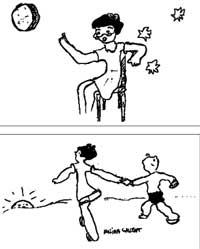
Astronomy is the science of observation. Astronomy is useful to observe and for this reason young people of that age should use it. The universe, that is, the reality that surpasses our environment is the scientific theme and the laboratory is the sky of night and morning. It allows us to perform experiments: weigh the stars, analyze their components, stop or accelerate the motor forces, measure measurements and distances, study the surface, etc.
At this age, the most interesting exercise is observation. In any case, if we want the teaching process to be rich, we cannot limit ourselves to it. On the contrary, to learn what we have seen, we must measure and enhance a deeper perception of this reality. To quantify reality we propose to work by areas. For example, measuring angles allows quantifying the distance between the stars. Time measurement will allow us to detect the movements and reality of the observed changes and understand the phenomenon that filters the atmosphere by measuring the color and intensity of light.
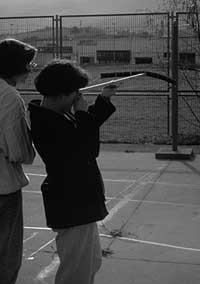
Young people of this age must develop their capacity for observation and systematic description. The observed changes and references to the observation site are the basis of this step. The material we will use can be varied: panoramic images of the horizon showing the dates, times and inlets and exits of the Sun, weekly measurements of the fall of the Sun, the measurement of distances between nearby bright stars and the Moon, the speed of the movements of the Moon and the duration of the Sidereal period (which, if possible, should be performed on each moon), the measurement of the position of the Moon with respect to the Sun.
Regarding this last exercise, we recommend that you do it the first days of each moon and, as far as possible, that the changing aspect of the moon is reproduced. In addition, in the second cycle of this stage will be the monthly or weekly measurement of a known planet and vibrant stars. After analyzing the data obtained, the young people will complete an image collecting the entire route observed.
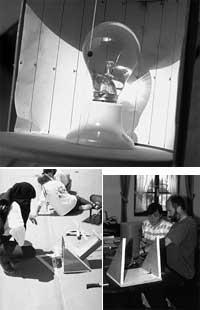
For all these exercises we recommend using astronomical and historical working tools: SQUARE AND ASTRONOMICAL CROSSBOW. In addition, we consider that building a SOLAR CLOCK can be an interesting exercise. By means of an instrument that can become a heliograph, children can carry out a practical model of measuring the observing time of the Sun previously performed using the hours of sun for the meteorological study.
Astronomy for young people
The set of exercises we propose for this cycle begins with the construction of a REFRACTORY TELESCOPE. This will allow to use the observations made in a plastic model and develop the capacity of abstraction of young bidenarbar. Among other things, the telescope is a simple way to define the orography of the planets and the Moon. In addition, it will allow a more detailed observation of the stars so that young people see that the points of light that form the constellations have their own character.
For students of this cycle to have a more accurate perception, they should include the following research topics:
- They will differentiate the colors and brightness of the stars, becoming aware of the relationship between brightness, size and distance.
- They will know nearby galaxies like Andromeda and will be able to differentiate stellar groups (double stars, variables, open sets, globular sets, etc. ).
- His explanatory models for explanation (such as Hertzprung-Russell) begin to be known and aware of his need: Shapley's structure for the galaxy and Hubble's model for universe expansion.
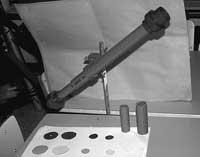
To be able to work the subjects of this cycle we propose the following material:
Construction of a DARK SOLAR CHAMBER.
Preparation of a POXPÓK-KUTXA spectroscope.
Create a photo follower in hand.
Creation of a DOBSON REFLECTIVE TELESCOPE.
As mentioned earlier, it is difficult to accurately associate with age. For example, the teacher's enthusiasm and dedication are not distributed over time, but at all ages. Thanks to this, the student will discover the reality that surrounds him and will be able to love and respect nature. We understand that the most effective way to achieve the goals set at the beginning of the teaching process is as follows.

